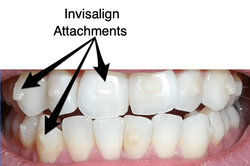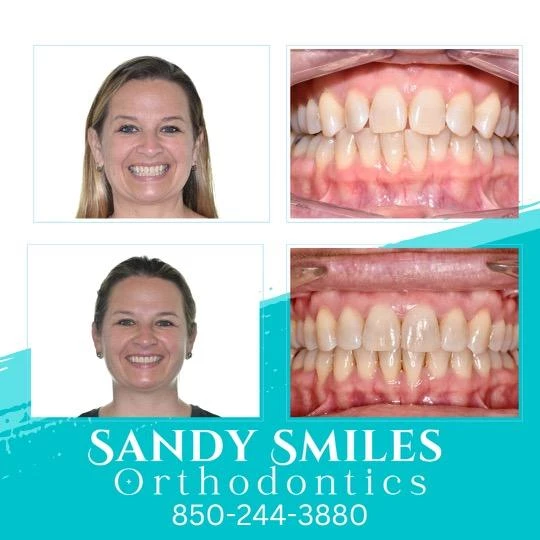Invisalign vs. Typical Braces: Which Option Is Right for You?
When taking into consideration orthodontic therapy, the choice between Invisalign and traditional braces provides numerous important elements that merit careful examination. Invisalign supplies a very discreet choice with removable aligners, while standard dental braces provide a more visible yet effective option for extreme imbalance.
Review of Therapy Alternatives

On the other hand, conventional dental braces include metal brackets and cords that are bonded to the teeth. This technique uses continuous pressure gradually to achieve positioning. While reliable for complex orthodontic problems, standard dental braces call for regular visits for modifications and can present obstacles in keeping oral health as a result of the trouble of cleaning around cables and braces.
Both alternatives have their merits, and the choice frequently depends upon specific dental conditions, way of life preferences, and client conformity. Ultimately, seeking advice from an orthodontic specialist is crucial for figuring out the most appropriate treatment plan customized to specific demands. Understanding the subtleties of each alternative can dramatically affect the general success of orthodontic treatment.
Visual Considerations
A significant variable influencing the selection between Invisalign and standard braces is the visual appeal each therapy supplies. Invisalign aligners are crafted from clear plastic, making them essentially unnoticeable when put on.
In comparison, traditional dental braces contain metal braces and wires, which can be extra visible. While innovations in orthodontic innovation have actually led to the development of smaller sized braces and colored elastics, standard dental braces still maintain a more conspicuous account. For some people, the presence of braces may discourage them from looking for required treatment.
Inevitably, the option in between Invisalign and conventional braces might hinge on individual choices regarding aesthetic appeals. People that prioritize discernment frequently favor Invisalign, while those that are much less worried about presence might go with traditional braces. Comprehending the aesthetic ramifications of each alternative is crucial for making an informed decision that aligns with one's lifestyle and preferences.
Comfort and Convenience

In terms of benefit, Invisalign aligners are detachable, enabling individuals to enjoy their preferred foods without constraint and preserve optimal oral health. Cleaning and flossing are simplified, as the aligners can be gotten during these routines, whereas traditional braces call for careful navigating around brackets and wires.
In comparison, traditional braces require routine changes, making them much less convenient for those with active routines. Generally, the convenience and convenience of Invisalign make it an appealing option for several individuals seeking orthodontic therapy.
Treatment Duration and Performance
While both Invisalign and typical dental braces are efficient in dealing with oral imbalances, the period of treatment can vary considerably between the 2 alternatives. Commonly, Invisalign treatment can take anywhere from 12 to 18 months, relying on the intricacy of the case. The clear aligners he has a good point function by progressively shifting teeth into their wanted settings, and normal follow-ups with an orthodontist assistance guarantee progression stays on track.
On the other hand, typical braces typically require a longer dedication, generally ranging from 18 months to three years. This results from their set nature and using brackets and cables, which can be a lot more effective for serious imbalances and intricate instances (Invisalign). The treatment effectiveness of conventional braces is well-documented, as they enable specific modifications and better control over tooth motion
Ultimately, the selection between Invisalign and standard braces may depend upon both the awaited therapy duration and the certain dental problems handy. Consulting with an orthodontist is essential, as they can offer tailored suggestions based upon specific requirements, why not try these out guaranteeing the picked technique straightens with preferred durations and outcomes.
Expense Comparison and Insurance Policy Options
Price plays a substantial role in the decision-making procedure for people taking into consideration orthodontic therapy, whether going with Invisalign or typical braces. Generally, the expense of Invisalign arrays from $3,000 to $8,000, while typical braces usually cost in between $2,000 and $6,000. Elements affecting these costs consist of the intricacy of the instance, the duration of therapy, and geographical place.
Numerous oral insurance coverage strategies offer partial protection for orthodontic therapies, yet the specifics can differ extensively. Normally, conventional braces might be much more frequently covered by insurance plans contrasted to Invisalign, which some insurance firms classify as an aesthetic treatment.
Furthermore, several orthodontic practices supply flexible payment strategies, making both therapy alternatives more available. Individuals ought to inquire concerning possible funding choices and discounts for upfront settlements. Assessing the complete cost, consisting of insurance coverage advantages and layaway plan, is necessary for making a notified choice that straightens with both visual choices and spending plan considerations.

Verdict
In recap, the selection between Invisalign and conventional dental braces rests on multiple aspects, consisting of visual preferences, convenience, therapy duration, and expense. Invisalign provides a discreet, detachable option that assists in oral health and dietary flexibility, while typical braces might be preferable for intricate oral concerns and typically come with a lower cost factor. Eventually, consultation with an orthodontist is important to analyze private scenarios and figure out the most proper therapy alternative for achieving optimum oral positioning.
When taking into consideration orthodontic treatment, the selection between Invisalign and typical dental braces offers a number of vital variables that warrant mindful analysis.Contrasting Invisalign and typical braces reveals distinctive treatment options for orthodontic adjustment.While both Invisalign and standard braces are effective in dealing with dental imbalances, the duration of treatment can differ substantially in between the two alternatives.Price plays a considerable duty in the decision-making procedure for individuals considering orthodontic go to website treatment, whether deciding for Invisalign or conventional dental braces.In summary, the choice between Invisalign and standard braces hinges on numerous factors, consisting of visual preferences, comfort, therapy duration, and expense.